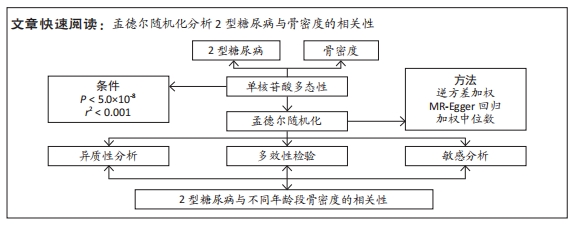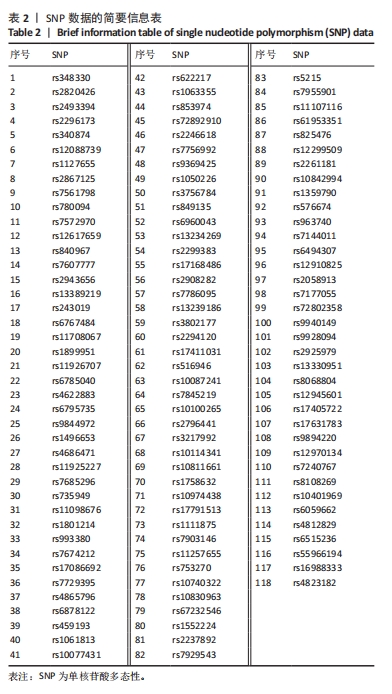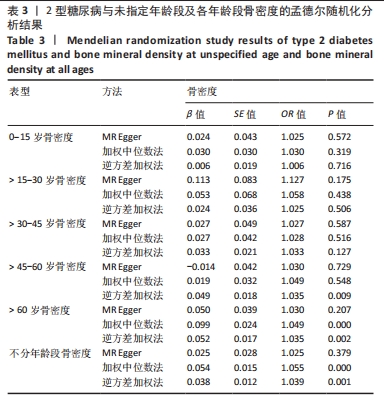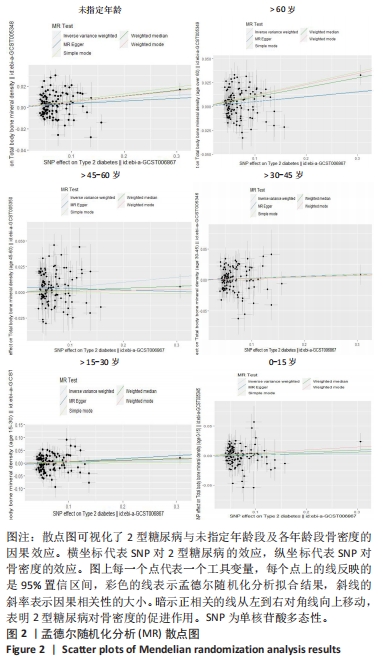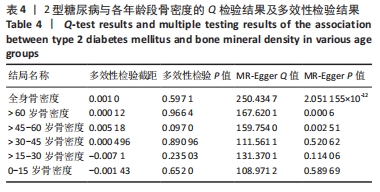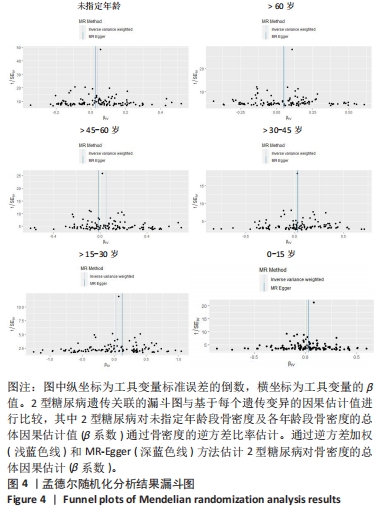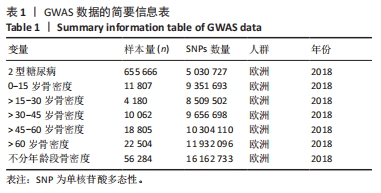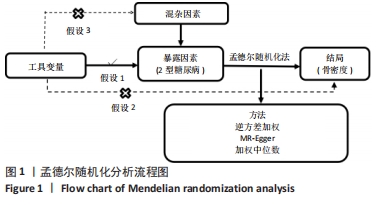[1] CHANG X, XU S, ZHANG H. Regulation of bone health through physical exercise: Mechanisms and types. Front Endocrinol (Lausanne). 2022;13:1029475.
[2] 《中国骨质疏松杂志》骨代谢专家组.骨代谢生化指标临床应用专家共识(2023修订版)[J].中国骨质疏松杂志,2023,29(04):469-476.
[3] WANG L, YU W, YIN X, et al. Prevalence of Osteoporosis and Fracture in China: The China Osteoporosis Prevalence Study. JAMA Netw Open. 2021;4(8):e2121106.
[4] 周凤云,耿健,程晓光.能量CT定量测量骨密度和骨髓脂肪的研究现状[J].中国骨质疏松杂志,2023,29(8):1215-1219.
[5] 张丽雯,阮梅花,刘加兰,等.糖尿病领域研发态势分析[J].遗传,2022,44(10): 824-839.
[6] KANIS JA, JOHANSSON H, MCCLOSKEY EV, et al. Previous fracture and subsequent fracture risk: a meta-analysis to update FRAX. Osteoporos Int. 2023;34(12): 2027-2045.
[7] 邓霞,秦慧娟,陈珂,等.2型糖尿病患者血清Metrnl水平与骨密度的相关性研究[J].中国骨质疏松杂志,2023,29(6):812-817+824.
[8] LIU J, TANG Y, PENG B, et al. Bone mineral density is associated with composite dietary antioxidant index among US adults: results from NHANES. Osteoporos Int. 2023;34(12):2101-2110.
[9] BOWDEN J, HOLMES MV. Meta-analysis and Mendelian randomization: A review. Res Synth Methods. 2019;10(4):486-496.
[10] LI B, QU Y, FAN Z, et al. Causal relationships between blood lipids and major psychiatric disorders: Univariable and multivariable mendelian randomization analysis. BMC Med Genomics. 2023;16(1):250.
[11] SHAPLAND CY, ZHAO Q, BOWDEN J. Profile-likelihood Bayesian model averaging for two-sample summary data Mendelian randomization in the presence of horizontal pleiotropy. Stat Med. 2022;41(6):1100-1119.
[12] BURGESS S, SCOTT RA, TIMPSON NJ, et al. EPIC- InterAct Consortium. Using published data in Mendelian randomization: a blueprint for efficient identification of causal risk factors. Eur J Epidemiol. 2015;30(7):543-552.
[13] TACHMAZIDOU I, HATZIKOTOULAS K, SOUTHAM L, et al. Identification of new therapeutic targets for osteoarthritis through genome-wide analyses of UK Biobank data. Nat Genet. 2019;51(2):230-236.
[14] YENGO L, SIDORENKO J, KEMPER KE, et al. GIANT Consortium. Meta-analysis of genome-wide association studies for height and body mass index in -700000 individuals of European ancestry. Hum Mol Genet. 2018;27(20):3641-3649.
[15] ZHANG H, LIU L, NI JJ, et al. Pleiotropic loci underlying bone mineral density and bone size identified by a bivariate genome-wide association analysis. Osteoporos Int. 2020;31(9):1691-1701.
[16] SKRIVANKOVA VW, RICHMOND RC, WOOLF BAR, et al. Strengthening the reporting of observational studies in epidemiology using mendelian randomisation (STROBE-MR): explanation and elaboration. BMJ. 2021;375:n2233.
[17] SUN K, GAO Y, WU H, et al. The causal relationship between gut microbiota and type 2 diabetes: a two-sample Mendelian randomized study. Front Public Health. 2023;11:1255059.
[18] LIN Z, DENG Y, PAN W. Combining the strengths of inverse-variance weighting and Egger regression in Mendelian randomization using a mixture of regressions model. PLoS Genet. 2021;17(11):e1009922.
[19] LIN L, LUO P, YANG M,et al. Causal relationship between osteoporosis and osteoarthritis: A two-sample Mendelian randomized study. Front Endocrinol (Lausanne). 2022;13:1011246.
[20] BOWDEN J, DAVEY SMITH G, HAXCOCK PC, et al. Consistent Estimation in Mendelian Randomization with Some Invalid Instruments Using a Weighted Median Estimator. Genet Epidemiol. 2016;40(4):304-314.
[21] 杨晓波.青年2型糖尿病危险因素研究进展[J].中国医学创新,2022,19(14): 175-179.
[22] 厉姝岑.青年2型糖尿病患者糖尿病痛苦影响因素及中介效应分析[D].南京:南京中医药大学,2021.
[23] ROSENBERG JL, WOOLLEY W, ELNUNU I, et al. Effect of non-enzymatic glycation on collagen nanoscale mechanisms in diabetic and age-related bone fragility. Biocell. 2023;47(7):1651-1659.
[24] ALI D, TENCEROVA M, FIGEAC F, et al. The pathophysiology of osteoporosis in obesity and type 2 diabetes in aging women and men: The mechanisms and roles of increased bone marrow adiposity. Front Endocrinol (Lausanne). 2022;13: 981487.
[25] 曹岚,李志强,师咏勇,等.端粒长度与2型糖尿病:孟德尔随机化研究与多基因风险评分分析[J].遗传,2020,42(9):882-888.
[26] WU F, HUANG Y, HU J, et al. Mendelian randomization study of telomere length and bone mineral density. Aging (Albany NY). 2020;13(2):2015-2030.
[27] 周昊龙. 2型糖尿病及相关指标对BMD的影响及因果推断研究[D].武汉:华中科技大学,2021.
[28] 陈玉华,郑标,成迪,等.线粒体自噬影响胰岛素抵抗的作用及机制[J/OL].生物化学与生物物理进展,1-14[2023-11-23]. doi: 10.16476/j.pibb.2023.0205
[29] PAN L, ZOU H, MENG X, et al. Predictive values of metabolic score for insulin resistance on risk of major adverse cardiovascular events and comparison with other insulin resistance indices among Chinese with and without diabetes mellitus: Results from the 4C cohort study. J Diabetes Investig. 2023;14(8): 961-972.
[30] CHEN ZH, ZHOU TF, BU YT, et al. Bone mineral density saturation as influenced by the visceral adiposity index in adults older than 20 years: a population-based study. Lipids Health Dis. 2023;22(1):170.
[31] LEE S, KIM JH, JEON YK, et al. Effect of adipokine and ghrelin levels on BMD and fracture risk: an updated systematic review and meta-analysis. Front Endocrinol (Lausanne). 2023;14:1044039.
[32] 向倩如,邓学健,陈华锋,等.基因修饰干细胞治疗骨质疏松:临床前研究的Meta分析[J].中国组织工程研究,2022,26(31):5053-5061.
[33] 续晓蓓,郭雪桃,王叶叶,等.不同年龄段的早发性卵巢功能不全患者进行激素替代治疗对骨密度疗效的比较[J].实用药物与临床,2023,26(10):888-892.
[34] LIU B, LIU J, PAN J, et al. The association of diabetes status and bone mineral density among US adults: evidence from NHANES 2005-2018. BMC Endocr Disord. 2023;23(1):27.
[35] BATHINA S, ARMAMENTO-VILLAREAL R. The complex pathophysiology of bone fragility in obesity and type 2 diabetes mellitus: therapeutic targets to promote osteogenesis. Front Endocrinol (Lausanne). 2023;14:1168687.
[36] HUANG G, CHEN X, CHEN Y, et al. Causal relationship between type 2 diabetes mellitus and bone mineral density: a Mendelian randomization study in an East Asian population. Osteoporos Int. 2023;34(10):1719-1727.
[37] KIM MW, HUH JW, NOH YM, et al. Exploring the Paradox of Bone Mineral Density in Type 2 Diabetes: A Comparative Study Using Opportunistic Chest CT Texture Analysis and DXA. Diagnostics (Basel). 2023;13(17):2784.
[38] DEDEOĞLU N, EŞER G, ÇELIK ÖZEN D, et al. Five-year change of panoramic radiomorphometric indices and fractal dimension values in type 2 diabetes patients. Oral Radiol. 2024;40(1):49-57.
[39] HU Z, MA C, LIANG Y, et al. Osteoclasts in bone regeneration under type 2 diabetes mellitus. Acta Biomater. 2019;84:402-413.
[40] HWANG J, YOO JA, YOON H, et al. The Role of Leptin in the Association between Obesity and Psoriasis. Biomol Ther (Seoul). 2021;29(1):11-21.
[41] BHANSALI S, BHANSALI A, DUTTA P, et al. Metformin upregulates mitophagy in patients with T2DM: A randomized placebo-controlled study. J Cell Mol Med. 2020;24(5):2832-2846.
[42] 韦婷婷. 胰高血糖素样肽1受体激动剂对2型糖尿病患者骨代谢影响的Meta分析[D].银川:宁夏医科大学,2022.
[43] 查涛,高梅红,王松华.利拉鲁肽对糖尿病骨质疏松症大鼠骨密度和胰岛素抵抗的影响[J].中国临床药理学杂志,2023,39(18):2659-2663.
[44] SASSI F, BUONDONNO I, LUPPI C, et al. Type 2 diabetes affects bone cells precursors and bone turnover. BMC Endocr Disord. 2018;18(1):55.
|
